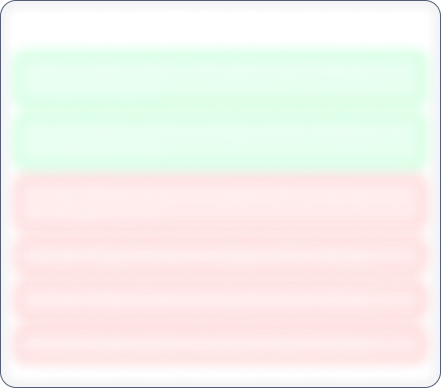Diwali Mega Sale 65% off
Oswal Pumps

No Data Available
Investor Sentiment
Oswal Pumps Share price and Fundamental Analysis
Key Metrics
Included In
Stock Returns
Stock Heatmap

No Stocks
Smart Score

Unlock Smart Score
See Detailed Analysis & Insights


Unlock Insights
See Detailed Analysis & Insights
Technicals
Returns Calculator
If you would have investedResearch Report
No Research Report
Corporate Action

No Data Available
Financials
Key Ratios
ROE
Avg ROE (3 Yrs) : NaN%
ROCE
Avg ROCE (3 Yrs) : NaN%
ROA
Avg ROA (3 Yrs) : NaN%
NPM
Avg NPM (3 Yrs) : NaN%
Dividend History
5 Year FactSheet
Documents

No Data Available
News
Oswal Pumps Management and History
Company Management


Unlock Management Data
See Detailed Analysis & Insights
Company History
Oswal Pumps Limited was incorporated on July 15, 2003 at New Delhi, India as Oswal Pumps Private Limited', a Private Company and was granted a Certificate of Incorporation by the RoC. The status then got converted into a Public Company upon the change in name to Oswal Pumps Limited' and a fresh Certificate of Incorporation dated November 15, 2006 was issued by the RoC.
The Company manufacture solar-powered and grid-connected submersible and monoblock pumps, electric motors comprising induction and submersible motors as well as solar modules, which they sell under the Oswal' brand. The operations are supported by two manufacturing plants in Karnal, Haryana. One facility is dedicated to production of pumps and motors, while the other in manufacturing solar modules.
The Company began its operations in 2003 with the manufacturing of low-speed Monoblock Submersible Pumps. Over the years, it expanded the operations to manufacture grid-connected high-speed monoblock pumps, gridconnected submersible pumps and electric motors.
The Company, in 2007, tookover the business of M/s Oswal Electricals (Pumps), from its sole proprietor, Padam Sain Gupta, the Promoter Group member. A new manufacturing plant was set up in Karnal, Haryana for pumps and electric motors in 2010. The Company started backward-integration for pumps in the Karnal facility for cast iron casting, automatic motor winding and lacing in 2011. It launched pure stainless steel fabricated pumps in 2012. Later, the Company formed a JV with Tata Power Solar Systems Limited and ventured into manufacturing and supply of solar pumps in 2019.
The Company started offering turnkey solar pumping systems comprising solar powered agricultural pumps, solar modules, mounting structures, pump controllers and their installations in 2021. The Subsidiary, 'Oswal Solar Structure Private Limited' was incorporated for manufacturing solar PV modules in 2022. The Associate, 'Walso Solar Solution Private Limited' has been incorporated to manufacture solar structures and balance of system kits in 2024.
The Company is planning an IPO by raising money from public aggregating to Rs 1000 Crore through Fresh Issue and by issuing upto 11,32,000 Equity Shares of Face Value Re 1/- each through Offer for Sale.
Oswal Pumps Share Price
Oswal Pumps share price reflects investor sentiment toward the company and is impacted by various factors such as financial performance, market trends, and economic conditions. Share price is an indicator which shows the current value of the company's shares at which buyers or sellers can transact.
Oswal Pumps Market Cap
Market capitalization of Oswal Pumps indicates the total value of its outstanding shares. Marketcap is calculated by multiplying share price and outstanding shares of the company. It is a helpful metric for assessing the company's size and market Valuation. It also helps investors understand how Oswal Pumps is valued compared to its competitors.
Oswal Pumps PE Ratio
Oswal Pumps PE ratio helps investors understand what is the market value of each stock compared to Oswal Pumps 's earnings. A PE ratio higher than the average industry PE could indicate an overvaluation of the stock, whereas a lower PE compared to the average industry PE could indicate an undervaluation.
Oswal Pumps PEG Ratio
The PEG ratio of Oswal Pumps evaluates its PE ratio in relation to its growth rate. A PEG ratio of 1 indicates a fair value, a PEG ratio of less than 1 indicates undervaluation, and a PEG ratio of more than 1 indicates overvaluation.
Oswal Pumps ROE (Return on Equity)
Return on Equity (ROE) measures how effectively Oswal Pumps generates profit from shareholders' equity. A higher ROE of more than 20% indicates better financial performance in terms of profitability.
Oswal Pumps ROCE (Return on Capital Employed)
Return on Capital Employed (ROCE) evaluates the profitability of Oswal Pumps in relation to its capital employed. In simple terms, ROCE provides insight to investors as to how well the company is utilizing the capital deployed. A high ROCE of more than 20% shows that the business is making profitable use of its capital.
Oswal Pumps Total Debt
Total debt of Oswal Pumps shows how much the company owes to either banks or individual creditors. In simple terms, this is the amount the company has to repay. Total debt can be a very useful metric to show the financial health of the company. Total debt more than equity is considered to be a bad sign.
Oswal Pumps Debt to Equity Ratio
The Debt-to-Equity (DE) ratio of Oswal Pumps compares its total debt to shareholders' equity. A higher Debt to Equity ratio could indicate higher financial risk, while a lower ratio suggests that the company is managing its debt efficiently.
Oswal Pumps CAGR (Compound Annual Growth Rate)
CAGR shows the consistent growth rate of Oswal Pumps over a specific period, whether it is over a month, a year, or 10 years. It is a key metric to evaluate the company’s long-term growth potential. Main metrics for which CAGR is calculated are net sales, net profit, operating profit, and stock returns.
Oswal Pumps Technical Analysis
Technical analysis of Oswal Pumps helps investors get an insight into when they can enter or exit the stock. Key components of Oswal Pumps Technical Analysis include:
Support Levels (S1, S2, S3)
There are usually multiple support levels, but the main support levels for a stock are S1, S2, S3. Support levels indicate price points where stock might get support from buyers, helping the stock stop falling and rise.
Resistance Levels (R1, R2, R3)
There are usually multiple resistance levels, but the main resistance levels for a stock are R1, R2, R3. Resistance levels represent price points where Oswal Pumps shares often struggle to rise above due to selling pressure.
Oswal Pumps Dividends
Dividends refer to the portion of the company’s profits distributed to its shareholders. Dividends are typically paid out in cash and reflect Oswal Pumps ’s financial health and profitability.
Oswal Pumps Bonus Shares
Bonus shares are usually given by companies to make the stock more affordable, increase liquidity, boost investor confidence, and more.
Oswal Pumps Stock Split
Stock split increases the number of its outstanding shares by dividing each existing share into multiple shares. When the company offers a stock split, the face value of the stock reduces in the same proportion as the split ratio.
Oswal Pumps Financials
The financials of Oswal Pumps provide a complete view to investors about its net sales, net profit, operating profits, expenses, and overall financial health. Investors can analyze financial data to assess the company’s stability and also understand how the company has been growing financially.
Oswal Pumps Profit and Loss Statements
The profit and loss statement of Oswal Pumps highlights its net sales, net profit, total expenditure, and operating profits in the current financial year. This Profit and Loss statement is crucial for evaluating the profitability and financial stability of Oswal Pumps .
Oswal Pumps Balance Sheet
The balance sheet presents a snapshot of Oswal Pumps ’s assets, liabilities, and equity of shareholders, providing insights into the financials of the company.
Oswal Pumps Cashflow Statements
Cashflow statements track the company's cash inflows and outflows over a period. It is an essential tool for understanding how well the company manages its liquidity and finances.


